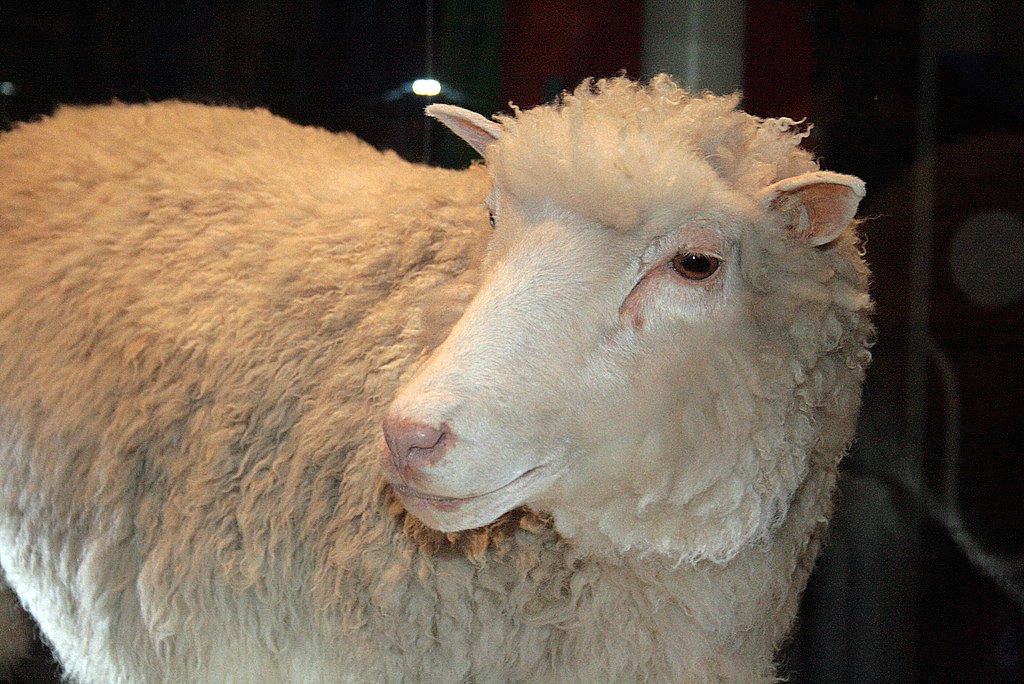Scientists at the Roslin Institute in Scotland created the first large mammal clone, a sheep named Dolly. Using emptied egg-cells and the nucleus from a mammary adult stem cell from another sheep, Dolly was, genetically, identical to the donor sheep. A haphazard process, Dolly was the only of 277 lambs to survive to adulthood.
While celebrating successes, an inebriated biology student beneath Wilmut and Campbell on the project, William Howard, boasted, “Well, so what, I'm gunna clone maself a dinosaur!”
Laughed off as the usual drunken banter of graduate students, the resulting angry spite from Howard caused him to pursue the project. He had no funding, but the widespread fame of Jurassic Park, the novel by Michael Crichton and film by Steven Spielberg, gained him notoriety. He used the newly developing Information Superhighway to start a message board, news group, and account for donations, usually only a few pounds, dollars, and, later, euros at a time. Picked up by the tabloids as perhaps a prank, Howard's popularity took off when he indicated that he was indeed serious.
Howard collected funds, began his lab, worked building relations with leading paleontologists (at least ones that would take him seriously), and created a team of innovative biological technicians. While the lab practiced cloning birds and amphibians, Howard waited for a specimen. Many rumors spread that he would attempt a wooly mammoth first, but Howard routinely refused.
In 2007, researchers at North Carolina State University under Mary Schweitzer claimed finding preserved material of a Tyrannosaurus Rex, clearly too good to be true as the king of the dinosaurs being the first to be cloned. Further research proved the material to be biological film, useless scattered bacteria.
In 2009, Schweitzer's team used similar techniques to discover actual bone cells and minute fragments of blood vessels of a Brachylophosaurus. This was Howard's chance. Over the next few years, his lab isolated usable DNA, sequenced it, and managed to reconstruct a whole system. After two months gestation, the first dinosaur in untold generations hatched from a nest of artificial eggs created from those of an ostrich. She was named “Dolly” after her sheep technological ancestor. Contained in a hyperbaric chamber made to mimic Cretaceous Earth, the first dinosaur lived only a few days, but more of its sisters successfully grew into adulthood.
Public outcry roared on positive and negative ends of the spectrum. Many claimed Howard was playing God, others said that he was leading mankind into a new era of ecological preservation. As he accepted his Nobel Prize, Howard repeated his drunken boast, affirmed it, and said he'd move on to mammoths now.
A hyperbaric terrarium later opened at the London Zoo, the first of many where eager tourists walk among peaceful herds of duck-billed dinosaurs munching on fronds. No interest has been made to reintroduce them to the wild in a world so changed from their own.
–
In reality, Dolly was successfully cloned, but no dinosaurs have come from her legacy. In 2009, a clone of a Pyrenean ibex, declared extinct in 2000, was successfully born, though she died shortly afterward.

No comments:
Post a Comment